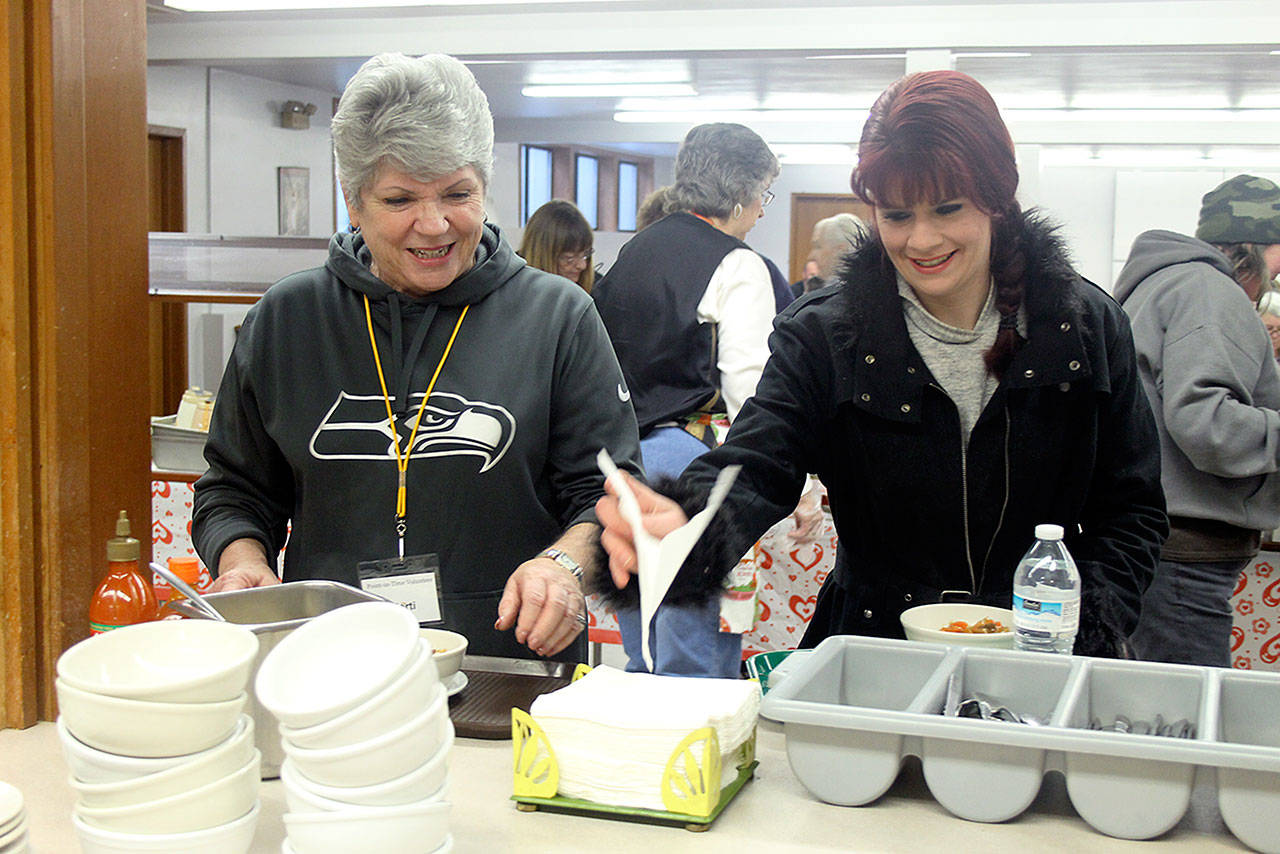Natasha Hamblin’s life is in a state of flux.
The 29-year-old is homeless and has been a heroin addict for the past six years. She used to live in the woods near Langley in a trailer, but that was stolen. The Langley Police Department found her sleeping in the Visitor Center’s women’s bathroom on Thursday. Police took her to the Island County Homeless Point in Time Count at Island Church, one of two that happened on Whidbey Island on Jan. 25, while also securing a bed for her at a drug rehabilitation center in Sedro-Woolley.
The goal of the nationwide annual count is to identify the number of sheltered and unsheltered homeless people, find out what their needs are and which services the county can provide to help them, according to Joanne Pelant, housing resource coordinator for Island County. The effort, which began at 7 a.m. on Jan. 25 and lasted into the afternoon, required volunteers from South, Central and North Whidbey and Camano Island.
“This is the longest running data that we have as a state and a nation on homelessness,” Pelant said.
Hamblin, who is originally from Ohio, considered herself blessed to be on South Whidbey because of its support system. At her side have been the Whidbey Island Homeless Coalition, the Island County Sheriff’s Office and Langley police officers. The various groups have escorted her to detox centers, helped secure a bed for her in treatment, fed her, given her blankets and made sure she’s usually had a roof over her head.
“They’ve just wrapped their arms around me, all of them,” Hamblin said. “…I’ve never seen anything like it.”
There are several different strategies used to find homeless people, according to Faith Wilder, president of the Whidbey Island Homeless Coalition and coordinator of the Point in Time Count on South Whidbey.
The first is to offer a local hub with free services; Island Church provided free food, clothing, hair cuts and hand and foot massages. In Oak Harbor, it was held at the Spin Cafe.
In exchange, the homeless participate in surveys that ask where they slept the night before, how long they’ve been homeless, what their source of income has been, if they have children and the circumstances that led to their housing status.
Volunteers also conduct “town sweeps” where the homeless are most likely living, which is sometimes in the woods or in urban areas.
One of the most successful strategies has been finding homeless people who ride Island Transit, Wilder said.
Last year, county officials and volunteers counted 127 individuals at events on the North and South End of the island. Over 30 of those counted were minors.
Catherine Reid, Island County program coordinator, said staff knows a lot of people don’t get counted because they aren’t found and a few choose not to be surveyed.
“We look at it as a one-day snapshot,” she said.
Wilder sees the survey as having a dual purpose. The information is passed up to the state and federal government to get a better grasp on the status of homelessness nationwide.
It also provides the county an assessment of what homeless living conditions are.
“We’re finding a lot of singles out there alone,” Wilder said. “We’re finding elder people, we’re finding people with disabilities. That really speaks to the county to anticipate the kinds of services and it certainly speaks to our lack of capacity to house people who need it.”
Wilder said the Island County Housing Support Center is the one-stop shop for getting homeless people or those at-risk of being homeless back on their feet.
One of the volunteers was 37-year-old Freeland resident Tanya Stager, who was in charge of the children’s play area at Island Church. The Whidbey Island Homeless Coalition board member was homeless for a time and can empathize with the difficulties associated with the experience. She and her family stayed at the House of Hope, a temporary residential shelter in Langley, for a short time while they looked for a new house.
“They (the coalition) have a lot of board members but they don’t have anyone who has ever been through homelessness,” Stager said. “So, it’s just a different kind of insight. It was a struggle, but it was good to have that core of support behind me.
“It’s easy for me to go in and talk to our clients and walk them through the process. I can say I’ve been here before.”
Hamblin was as much a volunteer as she was a participant in the survey. She helped greet people as they entered the church, while she also identified where volunteers could find homeless people living in the area.
Hamblin said the key to finding stability is seeking out services that can help them.
“You’ve got to reach out and help yourself,” Hamblin said. “…It’s amazing. You just have to ask.”
She was taken to Sedro-Woolley later that day.
Whidbey News-Times reporter Laura Guido contributed to this story.


